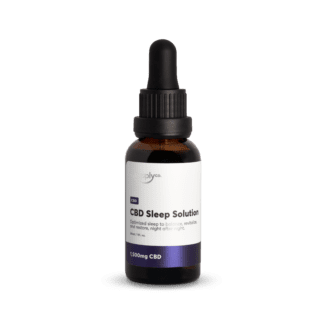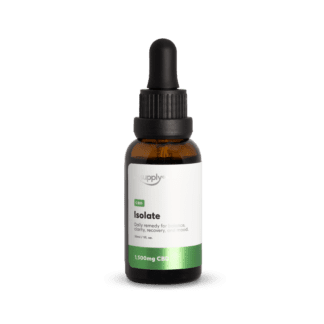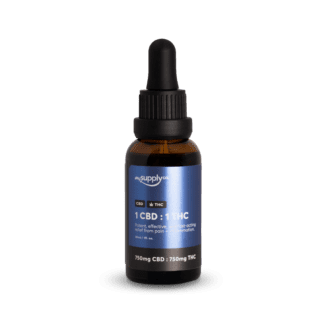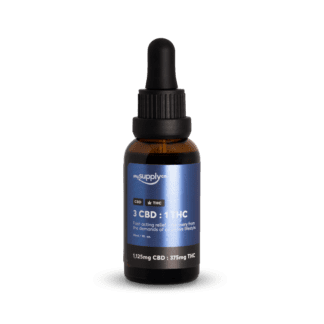Key takeaways.
-
What is endometriosis?
Endometriosis is a disease affecting the reproductive organs in women. It's painful and can have complications if it isn't well treated.
-
What is the endocannabinoid system's role?
It's known that endocannabinoid levels and cannabinoid receptor expression change dramatically during a woman's cycle. Researchers have noted that women with endometriosis have elevated endocannabinoid levels throughout their menstrual cycle but have decreased CB1 receptor expression.
-
Can cannabis help with endometriosis?
THC might be helpful in endometriosis-related pain because it's able to modify uterine innervation. In another Australian study, researchers found that women who used cannabis had the best self-reported scores for symptom management.
Endometriosis - en-doe-mee-tree-oh-sis — is a disease affecting the reproductive organs in female bodies. It’s often painful, and sometimes debilitatingly painful. It’s estimated that there are around half a million Canadian women with endometriosis. The unfortunate reality for many women with endometriosis is that it is life-long and there are very few treatment options.
But endometriosis is slowly becoming one of those significant avenues of cannabis research. As scientists discover the connection between the endocannabinoid system and endometriosis pain, some evidence is suggesting that it’s a plausible treatment.
Given how debilitating endometriosis pain is, and how few treatment options there are outside of surgery, endometriosis treatment is becoming a serious issue. On top of this, many women go undiagnosed for years as just having “bad period pain” before admitted for testing.
It seems that more recently, endometriosis research is emerging from the shadows, and with it, the potential of cannabis for treatment of endometriosis pain at the very least.
In this article, we’re checking out some of the latest research and what the science says about the significance of medical cannabis in treating endometriosis.
What is endometriosis and how does it happen?

Endometriosis is the disease that ensues when endometrial tissue grows in places other than the uterine cavity. The overgrowth of endometrial tissue can happen anywhere around the pelvic area. In severe conditions, the tissue will grow and form melds between organs or tissues that are not meant to be melded together. Endometriosis is associated with severe, chronic pelvic pain especially during menstruation. Other symptoms include excessive bleeding, painful sex, painful bowel movements and urination, fatigue and nausea.
Even though the endometrial tissue grows outside the uterine cavity, it still bleeds as though it would if it were in the correct place. It’s thought that this is what causes the pain associated with endometriosis.
One of the few explanations for what causes endometriosis includes retrograde menstruation. It happens that endometrial progenitor cells (endometrial stem cells) are sometimes shed during menstruation. It can also happen that menstrual blood containing endometrial progenitor cells travel backwards through the fallopian tubes and into the pelvic cavity.
Another explanation is that immune disorders might make it hard for the body to identify and manage overgrowth in endometrial tissue.
Although we don’t know the exact cause of endometriosis, there are some associated risk factors:
- Getting the period at a young age and/or going through menopause at an older age
- Low BMI
- A relative with endometriosis
- Other reproductive tract abnormalities
It’s estimated that around 7% of women in Canada live with endometriosis and around half are aged 18-29 when they are first diagnosed.
Endometriosis and the endocannabinoid system.

The endocannabinoid system (ECS) is implicated in a lot of different aspects of female health. For example, endogenous cannabinoids levels fluctuate greatly during the menstrual cycle. These fluctuations play a role in the different steps and processes of the menstrual cycle such as regulation of oocyte maturation. This puts the ECS under the spotlight when it comes to female reproductive disorders like endometriosis.
In one rodent study, researchers found that the CB1 receptor is expressed on the nerve fibres that play a role in endometriosis pain. More specifically, they found that CB1 agonists decrease endometriosis-related pain while CB1 antagonists increase hyperalgesia. To put that into real life context, THC is a CB1 agonist.
In a 2016 study, researchers found that women with endometriosis had elevated levels of endogenous cannabinoids throughout the menstrual cycle but decreased expression of the CB1 receptor. This discovery lends itself to the idea that CB1 expression and endocannabinoid levels play a huge role in endometriosis pain. The overexpression of endogenous cannabinoids may hinder their ability to moderate pain, creating a negative feedback loop system.
In other research, researchers have suggested that reduced functionality of the ECS leads to overgrowth of endometrial tissue, suggesting that underlying endometriosis is actually an endocannabinoid deficiency.
Can cannabis help with endometriosis?

There is no known cure for endometriosis despite there being multiple lines of treatment. Some women opt not to get a period at all and take eostrogen to stop periods. Some women undergo surgery to remove the endometrial tissue that has grown in the pelvic region. However, the tissue can grow back and surgery might be required again. Others simply use painkillers to manage the pain without other kinds of treatment.
Surgery isn’t typically considered for women who aren’t at risk of complications due to their endometriosis (infertility, the melding of organs, etc.). Which often means that pain management is one of the only long-term options available. And that’s where cannabis seems to be able to help.
THC might help with endometriosis in more ways than just being analgesic, because endometriosis-related pain is a special kind of pain. THC has been shown to modify uterine innervation, reducing the hypersensitivity of the nerve fibers responsible for endometriosis related pain. In the same research, THC was also able to reduce or inhibit the development of endometrial cysts.
In one Australian study, women who used cannabis had the highest self-reported effectiveness in pain management strategies for endometriosis.
So cannabis might not be curing endometriosis, but it looks like cannabis might be an effective strategy for dealing with endometriosis pain at home. From both anecdotal evidence and scientific evidence, there’s reason to believe that THC might have a role to play in endometriosis pain management in the future.
Cannabis and women’s health.
Trying to understand cannabis and endometriosis should highlight two very important things: one, the endocannabinoid system plays a major role in women’s reproductive health and two, cannabis has the power to interfere with that. The understanding that THC might alter the way that uterine tissue is innervated might also explain why so many women love using cannabis to treat period pain in general, whether it’s endometriosis-related or not.
Knowing that the ECS is so heavily implicated in women’s health also means that women should feel empowered into using cannabis in a healthy way.
Ladies out there with endometriosis — have you ever tried cannabis? Does it help with your pain? We’d love to hear from you in the comments!






